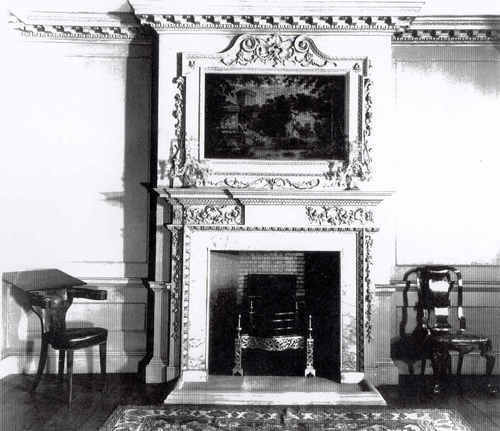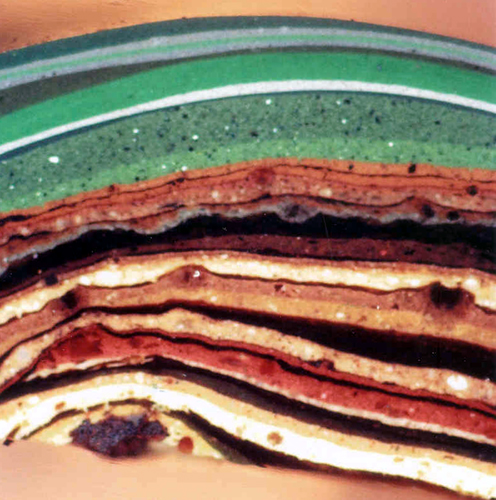
Nos. 56 and 58 Artillery Lane, Spitalfields were known until 1895 as Nos. 3 and 4 Raven Row. They may have been built by Samuel Jaggard in ca.1716-1720 as a pair to replace earlier seventeenth century buildings, although this isn’t clear.
In the 1750s, most probably 1756-57, the early Georgian red brick facades may have been taken down and rebuilt in their present Palladian form. At the same time the shop front to No. 56 was inserted.
The shop front of No. 58 is thought to have been replaced in the early nineteenth century.
I was commissioned to carry out the paint analysis of the exterior and interior of both No 56 and 58 Artillery Lane.
During the 1920s the timber panelling of the first floor front room of No. 58 was removed from the building. In 1923 it was exhibited at the Geffrye Museum, but is believed to have been withdrawn by the then owner of the house. It then appears to have been sold to two Americans, Robert Allerton and Waller Borden, who later bequeathed it to the Art Institute of Chicago.

In 1997 the Spitalfields Trust agreed to a private sale with the Institute in order that it might be repatriated to the UK for eventual reintroduction to No. 58. It was agreed with the Spitalfields Trust that as part of the restoration of No. 58 the recovered room interior would be reintroduced to the house. This room was also investigated and the earlier decoration established.

Pale stone colours had been used on both shop fronts until the ca.1870s. Both shop fronts appear to have been painted in the same colour (dark green) since the post fire restoration of the early 1970s.
Details on No 56 Artillery Lane can be seen here.
I have subsequently been asked to sample a eighteenth century shopfront in Dean Street, Soho and the results can be seen here. A nineteenth century one in Scotland has also been analysed.
Although referring to Chelsea, this article shows that the use of colour was fairly constant across London.
View Larger Map












No comments yet. Be the first!